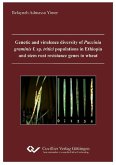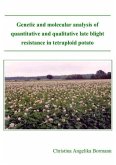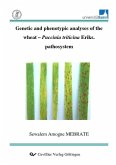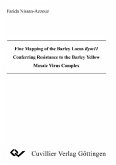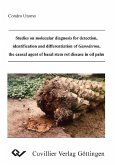Ethiopia is the second largest wheat producer in the sub-Saharan Africa. The country is rich in genetic resources of tetraploid wheat and has suitable environments for wheat production. However, the country is a net importer of wheat particularly durum wheat (hard wheat). The demand for durum wheat is continuously increasing because of the new emerging food processing industries. But the productivity of wheat in Ethiopia is low due to biotic and abiotic stresses. Among the biotic factors, diseases particularly stem rust play a significant role in yield reduction. As a result of a recent spread of a new and highly virulent race of Puccinia graminis f. sp. tritici (Pgt), Ug99, stem rust is becoming a serious threat to wheat production in Ethiopia as well as in other East African and wheat producing countries. Therefore, it is important to identify new resistance sources and to apply marker assisted selection for sustainable and efficient control stem rust.
The aims of the studies included in this thesis were (i) identification of QTL and test for epistatic effects in a segregating population for resistance to stem rust, (ii) identification of stem rust resistance (Sr) genes that are present in durum wheat (Triticum durum Desf.) varieties that were released in Ethiopia during the period 1966–2009 and tetraploid wheat landraces using linked/diagnostic molecular markers and (iii) Evaluation of genetic diversity and relationship pattern within and among these tetraploid wheat landraces and improved varieties based on SSR/STS markers including those linked with reported stem rust resistance genes and QTL.
Across all the three experiments, our study demonstrates that there exist potential germplasm and strategies to combat the threat posed by Ug99 and its derivatives. These results provide useful information to wheat breeders in Ethiopia and other national and international programs, regarding the use of available landraces and released varieties for the enhancement of the genetic base of wheat germplsm. Particularly it will give an alarm for Ethiopian wheat breeders to broaden the genetic base of the varieties that will be released in the future since most of the varieties released for the last five decades have a narrow genetic base. In addition, our research provides a base of knowledge for future QTL and gene mapping conferring resistance to stem rust and the use of the linked markers in marker assisted selection.
Dieser Download kann aus rechtlichen Gründen nur mit Rechnungsadresse in A, B, BG, CY, CZ, D, DK, EW, E, FIN, F, GR, HR, H, IRL, I, LT, L, LR, M, NL, PL, P, R, S, SLO, SK ausgeliefert werden.



